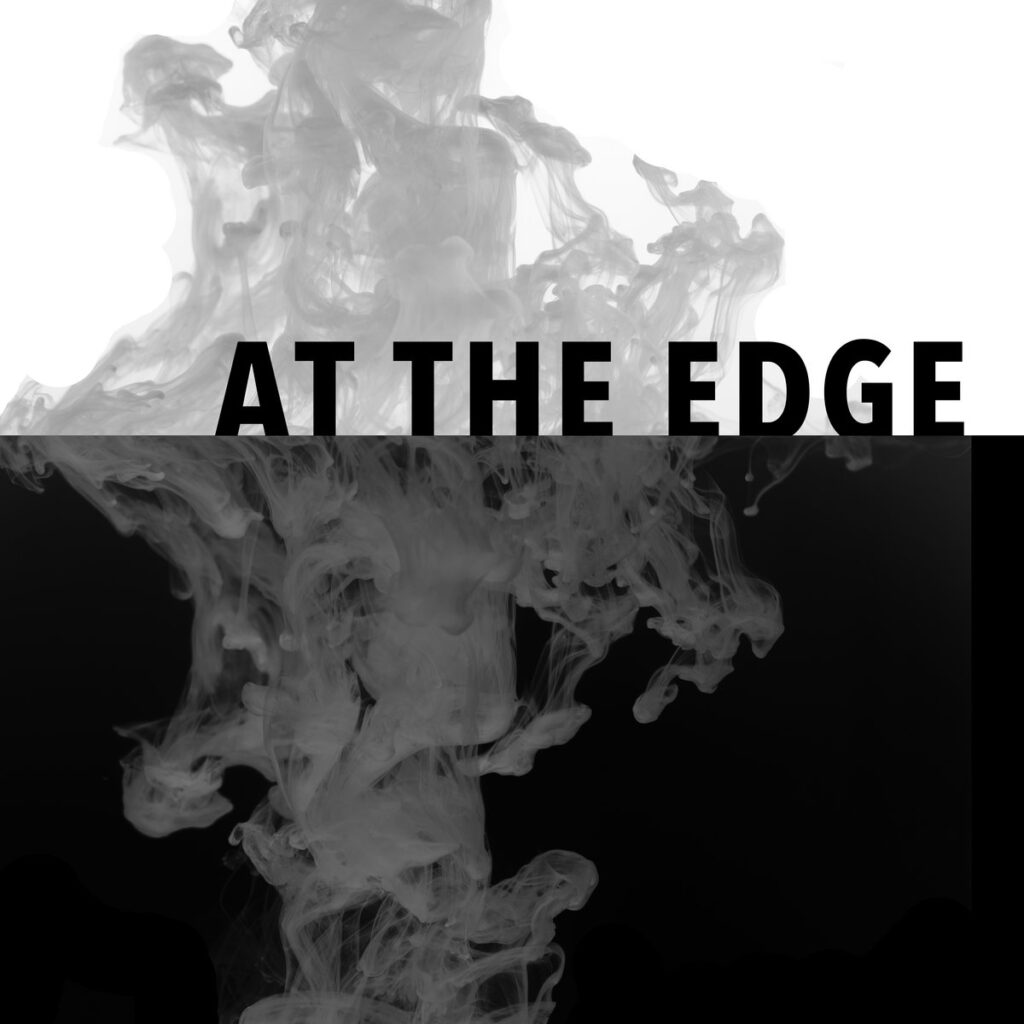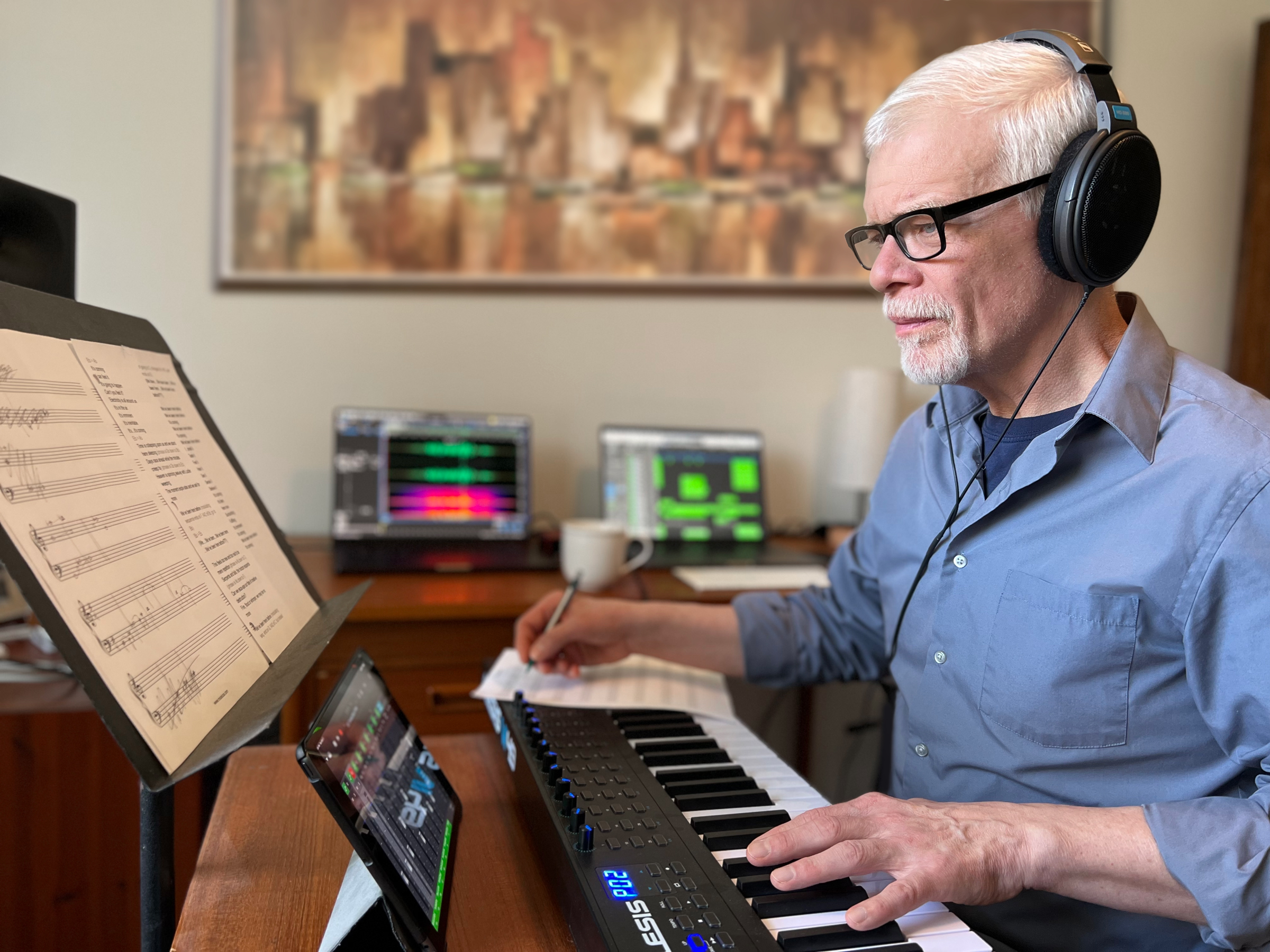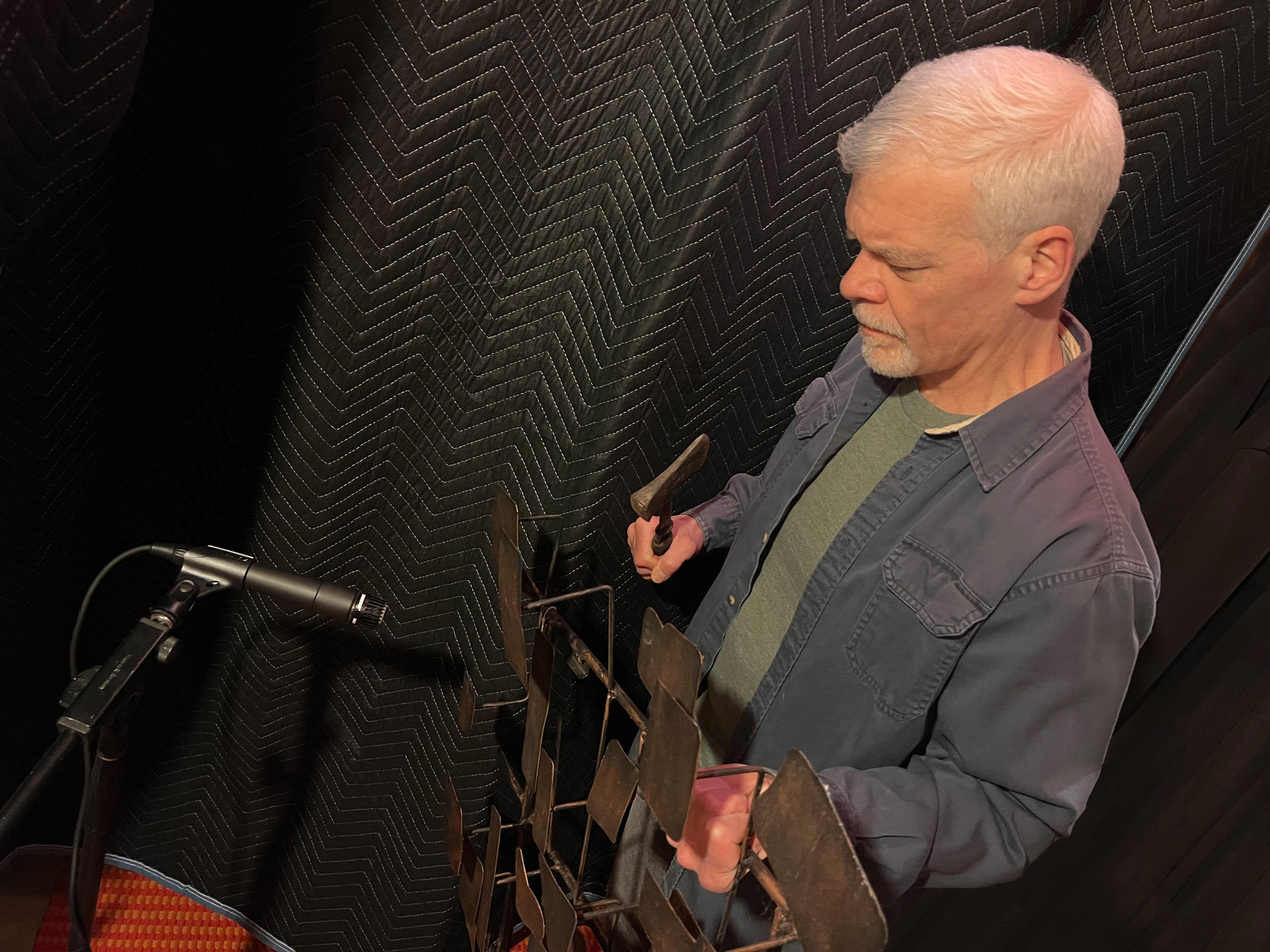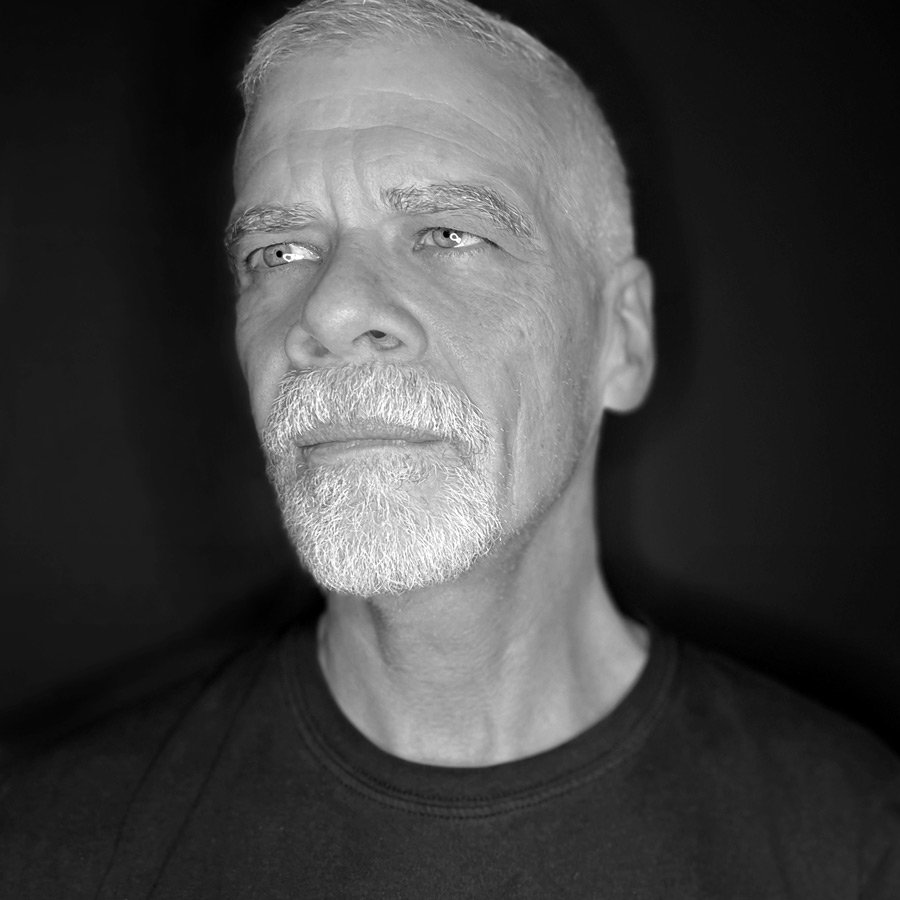Exploring the intersection of industrial and classical music, Brian Tibbs‘ new release “At The Edge” delves into themes of personal and societal crisis within modern industrialized societies. Each track serves as a sonic exploration, blending quantized rhythms with classical harmonies and layered vocals, while balancing contrasting emotions of darkness and light. As an independent artist based in Chicago, Brian aims to continue pushing boundaries, with upcoming projects including singles and a potential collaboration with a bassoon player, reflecting his ongoing exploration of music’s possibilities.
Join us and explore the world of Brian’s musical creation in an interview following the inclusion on the Progotronics XLII compilation.
Can you tell us about the inspiration behind your new album, “At The Edge,” and how you fused industrial and classical music in its creation?
I’ve long had a desire to meld industrial and classical music. And by industrial I don’t mean EBM, though that is also an influence, but more old school industrial such as Throbbing Gristle, Einstürzende Neubauten, SPK or others from around 1980. But even before I discovered those bands, Jerry Goldsmith’s score for Star Trek the Motion Picture had a profound impact on me, with its inclusion of electronic elements and the incredible Blaster Beam instrument. For a long time, I’d imagined creating music that was classical/orchestral with industrial sounds and noise melded in. That’s what originally led me to study classical composition. But more recently, I realized that I could accomplish the same type of thing through purely electronic music, so that’s really what you hear on “At The Edge.” A musical foundation that is post-punk/industrial with harmonies and other aspects pulled from classical.
The album seems to explore themes of personal and spiritual crisis in industrialized society. Could you elaborate on how these themes influenced your songwriting process?
Thematically, it is very much about the struggle to make meaning in the post-agrarian (industrial) and post-religious world. And that phrase “make meaning” brings its own sense of forging or manufacturing. A life without meaning is very alienating. I’m not a Marxist, but Karl Marx talked about alienation in an industrialized economy and I think he had a point. Modern industrialized society can be alienating and atomizing. So the songs all deal with people finding themselves in a state of existential crisis, or at the edge. And even though these are six individual songs, they share some harmonic content and common musical gestures, so I hope they feel like they belong together. Also, there is a bit of dramatic arc that runs through them all. The first song “Digging” opens with a sort of genesis, the sound of aggressive machinery with music appearing out of the smoke. And the last song “Visitor” ends in something like an apocalypse or apotheosis, with static and noise swallowing up the music and a lone major chord ringing out afterward. Was that birth? Death? Transformation? That’s for the listener to decide.

What role do you see technology and machinery playing in the narrative of your album, and how did you incorporate these elements into the music?
The industrial elements and machine sounds are meant to represent industrialized, mechanized and increasingly digitized society. Technology is the air we breathe, something we both rely upon and take for granted. And it’s something we can become lost in. On the album I used a lot of samples of mass-produced items that people use in daily industrialized life, handheld power tools, electric hair trimmers, a metal mixing bowl struck with a screwdriver, etc. There is also a fair amount of vocal audio processed to the point of being barely recognizable as human voice.
Could you walk us through your approach to blending quantized rhythms with classical influences and layered vocals on this album?
Given that the music is fundamentally post-punk/industrial, every piece has some kind of mechanically repeating rhythm. Then on top of that are layered a variety of synths, sample sounds and audio. Fairly standard for the genre. The classical influence is mainly in the harmonies, which diverge from what you normally hear in such music. A simple example is the use of strong V-I cadences. So much rock-derived music seems to avoid using V chords with a leading tone pointing back to the I chord. I suppose because it is so evocative of European classical music. But those strong cadences are important to structure, and I rely on those for important structural moments in the songs. Then with the different layers of vocals, most of the songs have at least two if not three vocal “characters” in something like a dialogue. Sometimes the vocals are straight-forward singing or intoning, sometimes they’re processed, sometimes they’re a whisper. And often the voices represent different aspects of a disintegrated individual or society. In that way, you might say the songs are pointing in the direction of opera, or maybe a motet. I mean, it sounds nothing like opera, but there is a hint of different characters. Every song is its own mini music drama telling its own story.
“At The Edge” balances darkness and light, despair and hope, resignation and resistance. How did you navigate these contrasting emotions while crafting the songs?
The lyrics themselves convey a mix of darkness and lightness. And the music often expresses a disparity between dark, low synth bass set against synths in a register higher than typical for industrial music. In the song “Digging”, the first two choruses of “Who are we?” are angry and demanding. But the last time you hear the chorus it’s soft and plaintive. Or the contrast of distorted, processed vocals against whispered vocals. Or in the song “Feel It”, the sung vocals that leap up from the machine-like rhythm, but always fall back down. Those sorts of contrasts run throughout all six songs.

Your background spans songwriting, singing, multi-instrumentalism, and production. How did you leverage these skills to bring your vision for this album to life?
I’m not really a multi-instrumentalist, and I barely pass as a keyboardist! Listeners will notice there’s no instrumental virtuosity on this album, it’s more textural, sonic and harmonic. I do think of myself primarily as a composer and maybe in a way an orchestrator. Even without keyboard virtuosity, there is still a lot going on in this music, it’s very layered. At the risk of sounding pedantic, many aspects of the music do come out of the classical training I received. And I’m obviously not a young kid; the music, lyrics, etc. are all a synthesis of my varied musical tastes and life experiences.
Can you discuss the significance of the album’s title, “At The Edge,” and how it reflects the thematic content of the music?
I imagine “The Edge” as a place where opposites meet, a place of conflict and chaos where new things come into being and where other things cease to be. And each song examines different aspects of that. You might say “Digging” is at the edge of ideology and autonomy. “Imminence” is at the edge of hope and resignation. “Feel It” is at the edge of our conflicted human impulses. “All or Nothing” is at the edge of action, inaction and self-determination. “Invocation” is at the edge of the known and the unknown. And “Visitor” is at the edge of the self and everything else. And all of it placed in the larger context of the struggle for meaning within industrialized society.
How do you see your music fitting into the contemporary music scene, particularly in Chicago, where you’re based?
For the time being, I’m very much a solo artist and a studio artist with no plans for live performance – I have fairly bad stage fright! I am, however, working toward a collaboration with a local bassoon player. Bassoon has a pretty wide note range and can be quite agile in its upper registers, and I love the idea of taking that inherently classical instrument and processing it until it sounds nothing like bassoon. Layers of processed bassoon…I really hope this collaboration comes together!
What challenges did you encounter during the creation of “At The Edge,” and how did you overcome them?
The main challenge for me was finding vocal styles that I felt would suit the “variegated” qualities of the music. I’m a baritone and don’t have the widest vocal range. So trying to find that sweet spot was a challenge. Sweet spot might be the wrong term; it’s an ongoing endeavor!
How do you approach collaboration in your music-making process, if at all? Were there any notable collaborations on this album?
This album was very much a solo effort, except for mastering which was done by the talented Robert L. Smith at Defy Recordings. I do hope to collaborate with other artists in the future, and not necessarily musicians, maybe visual artists as well.
Could you share some insight into your songwriting process? How do you typically begin crafting a song, and how does it evolve from there?
It varies from song to song, but because I consider myself a composer above all else, I usually start with a musical idea, then start elaborating on that idea. If it seems valid and workable, I stop composing and decide what the music is about, then start working on lyrics. From there the lyrics and the music co-evolve. One thing that’s important to me is that the music truly reflects the concept and what’s being said in the lyrics. This is another thing I’ve brought in from classical music, and one of the results is that each song has its own structure and is a unique little musical journey. A good example might be the song “Imminence” which is basically a musical study in “same but different”, evolution versus revolution. There is musical repetition with small variation, stretches of alternating I and IV chords, punctuated with passages of swift harmonic change to a new key, and at one point a dramatic modulation to an unexpected key. And the song ends in nearly the same key it starts in, but a semitone off…almost the same, but not quite. Listeners may not be aware of that happening, but I want to have that conceptual unity of music with the concept and the lyrics.
What do you hope listeners take away from “At The Edge” after experiencing it in its entirety?
That’s a difficult question, because given the gravity of the themes I have tried to be more descriptive than prescriptive. I don’t want to tell anyone what they should do. In a way, I’ve laid out puzzle pieces and I’m leaving it up to the listener to assemble them into a picture. Obviously, I know the picture I have in mind, but others may assemble something different. That in itself connects to the concept of manufacturing meaning. Broadly speaking, I hope listeners take away the idea that they can have more control over their life than they may realize. Not total control, of course. Few if any people have that. But in the “wasteland” of the post-agrarian, post-religious world, meaning rarely falls into your lap, it is something that needs to be elaborated, molded or crafted. It’s sort of a quest each individual must undertake over time. Also, that making meaning is not just about you as an isolated individual, but as an individual within a larger context. Finally, I hope listeners will get the idea that even though things are often dark or dire, there can also be light, but we need to make it happen. And that might mean letting go of something.

As an independent artist, what are some strategies you’ve found effective for promoting your music and connecting with your audience?
Honestly, I’m still figuring that out! I’m in my “second life” as a composer and on top of that my music is kind of niche and idiosyncratic, so I’m still trying to find my audience. That can be hard for many artists, and I think even harder for someone like me who does not perform live.
How do you balance the creative aspects of making music with the practical aspects, such as marketing and distribution?
Any independent musician will tell you that’s hard. You never want to stop doing the creative work. But if you’re serious about your career in music you must think of it as a business, even if you’re not really making money yet. I think many small business owners would say the key to success is long hours and consistency of effort and output. For musicians that means continuing to work on new music even while you’re promoting your last song or album. It takes real dedication. And you need to be willing to fail and learn from failure.
Finally, what’s next for you after the release of “At The Edge”? Do you have any upcoming projects or performances that you’re excited about?
I am planning to release a couple singles in the coming months. One is a brief piano prelude, fairly classical sounding, with some industrial elements. It’s actually a prelude to a larger work, but this particular version will be released as a single. The other song is thematically and stylistically in the same vein as “At The Edge”. Then, as I mentioned, I’m hoping for that collaboration with the bassoon player. I always have a few things in the works, always exploring ideas. Exploration is what keeps life interesting!
For more about Brian’s work visit his website here.

